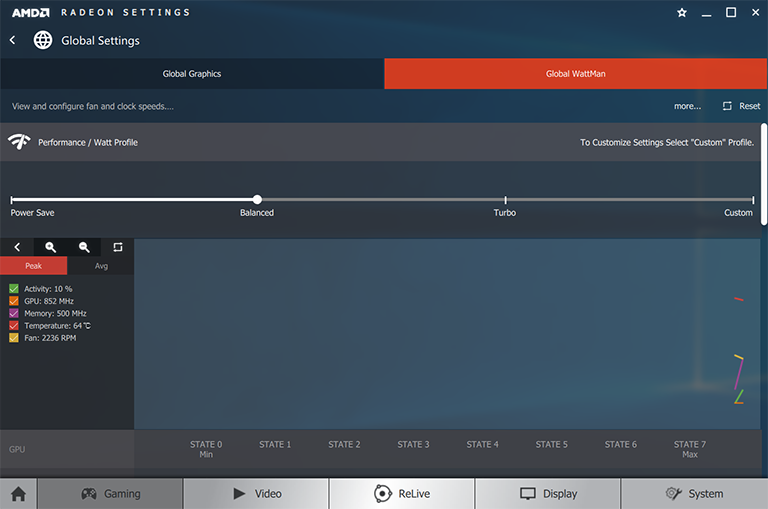Power Profiles
We spoke about the various RX Vega power profiles earlier, and it pays to investigate just what happens when they're activated. We have already shown you a number of benchmarks when using the default Balanced profile. Switching to another is as simple as sliding over and hitting apply, and we did this for Power Saving and Turbo.

Deus Ex: Mankind Divided was chosen because it is the most GPU-limited game in our suite, and we ran it at the QHD resolution. The first surprising observation is that there really isn't much of a performance difference when moving between profiles. Our logs show that the reference RX Vega 64 spends most of its time running at 1,401MHz core speed, which jumps to about 1,460MHz average for Balanced and 1,536MHz for Turbo.
The end result is a 4.4 per cent difference from best to worst.

Running at a moderate core speed - memory speeds remain the same - has a huge positive difference for system-wide power consumption. Noting that we're using Deus Ex and not Gears of War 4 here, the load numbers for Balanced are similar. Power Saving knocks a substantial amount off while Turbo increases it, so much so that the difference between the two bookend states is over 100W.
In other words, you get very little extra performance for chewing through 100W-plus more at-wall power. Our analysis is that AMD didn't get the RX Vega architecture to the performance point it wanted so the company resorted to jacking up the voltage in order to get closer to GeForce GTX 1080 levels.
The control-panel options make a strong case for running it in Power Saving mode unless you want that extra touch of performance.

Completing the analysis, the card's still vocal in any scenario, though we hope that AIBs can do better in terms of quietening it down.










